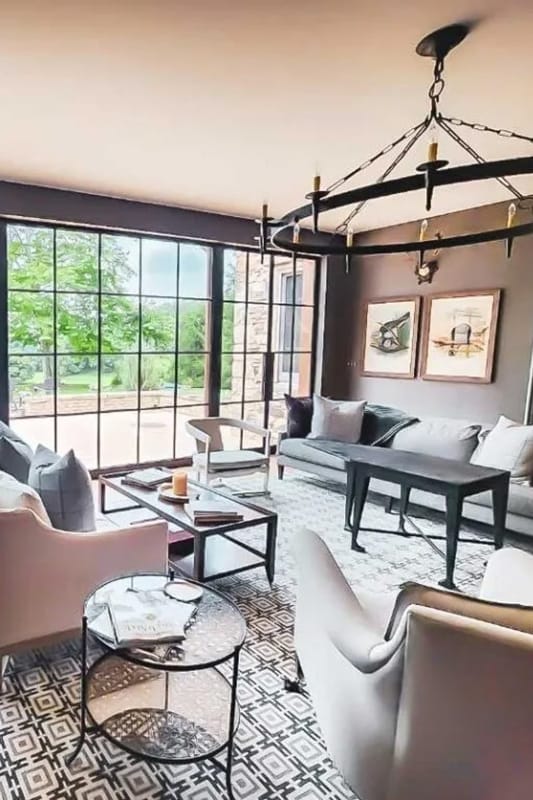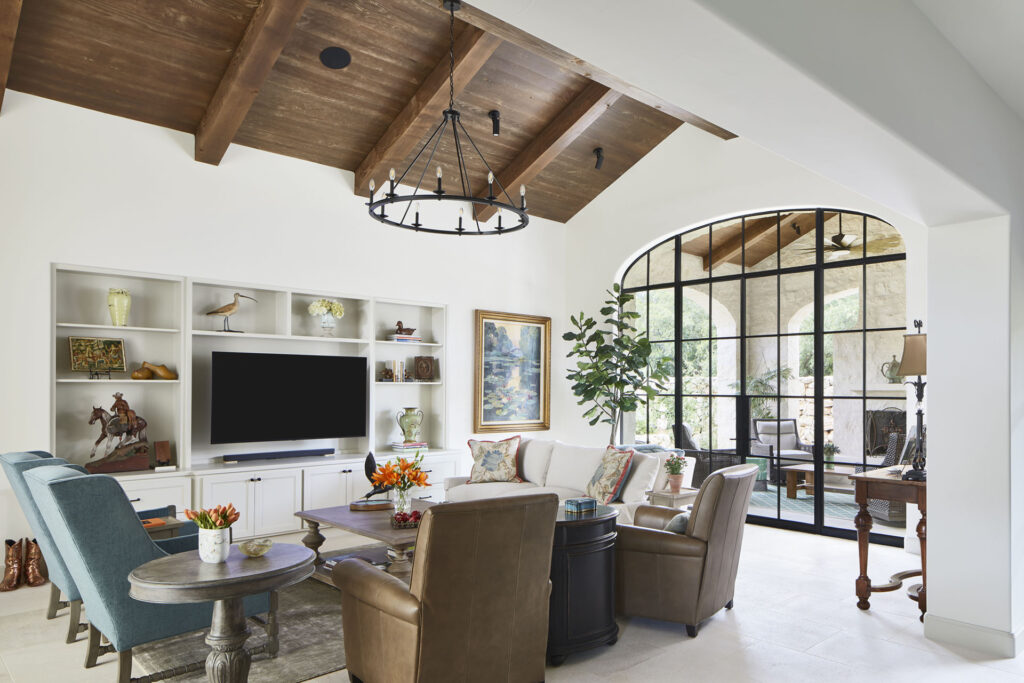First impressions count – so specifying an entrance door for any property is an important design consideration for every architect.
The right entrance door will complement the overall design of a home, becoming a focal point that invites guests inside and sets the tone for the interiors within, while also fulfilling important practical and security functions.
Bronze entrance doors are beloved by architects for their distinctive appearance, design versatility and long term durability – let’s take a look at some of the key qualities and considerations that come with specifying them into residential projects.
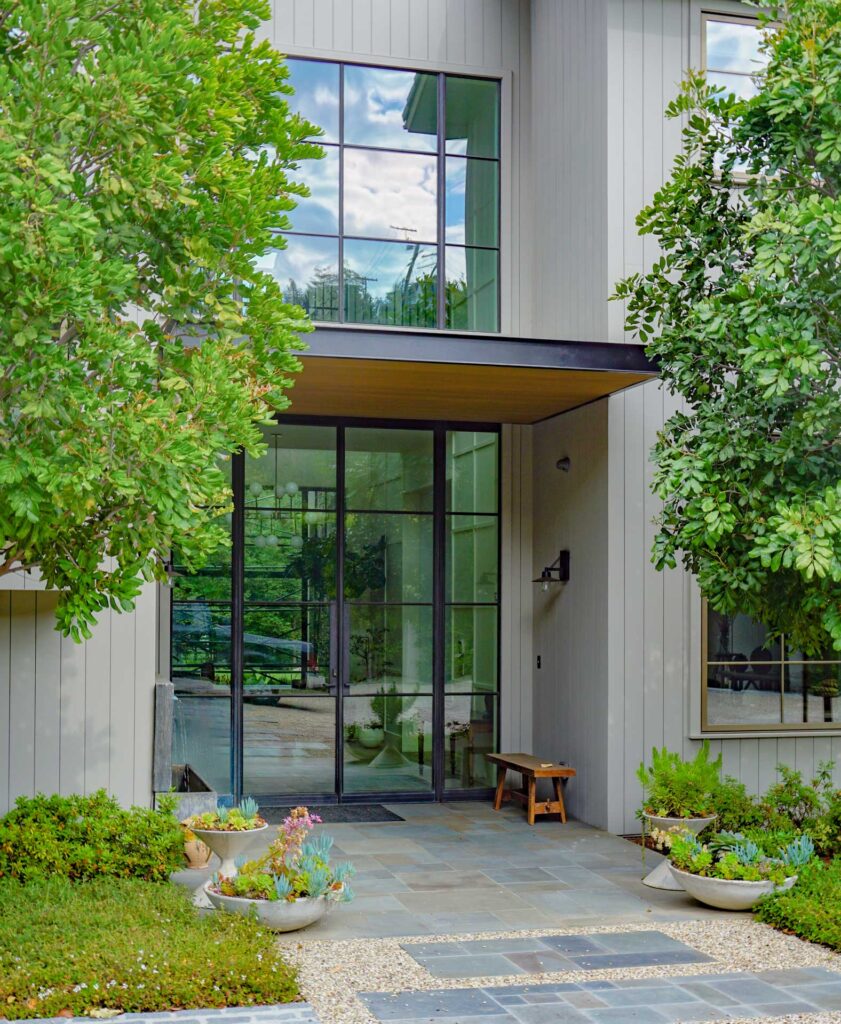
What makes bronze ideal for entrance doors?
It’s important to say that when we refer to bronze entrance doors here, we’re not talking about solid metal doors – we’re talking about glazed doors manufactured using bronze frames and muntin bars.
Architects will often specify a glazed entrance door for a property in order to maximize natural light in the entrance hall, to make an entrance feel more welcoming and relaxed, and/or to better connect and ground a property in its landscape.
The beauty of a bronze entrance door is that it can perform all of these design functions while simultaneously delivering on every aspect of performance.
Versatile design
Bronze entrance doors are extremely versatile in terms of their design – and at Renaissance, we offer a bespoke design service that transforms architectural concepts into fully functional reality, so it’s possible to create entrance doors of almost any size, shape and profile.
Durable & secure
Bronze doors also offer superb practical qualities – they’re structurally very strong, and highly durable in any environment with advanced corrosion resistance even in coastal settings and an estimated lifespan of more than 150 years, making them an ideal choice for heritage and contemporary projects alike.
Low maintenance
The natural patina of bronze entrance doors means they are virtually maintenance-free, while the design of our thermally-broken frames means there’s no need to compromise on thermal performance when specifying a glazed entrance door.
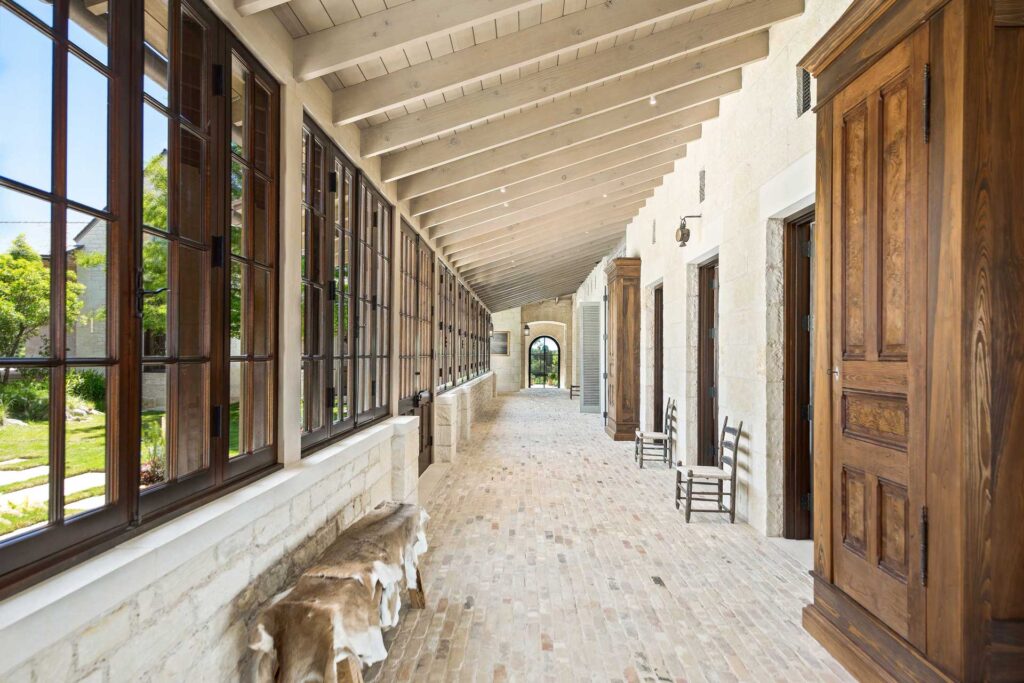
What are the key considerations when specifying a bronze entrance door?
As an architect, there are many different things to consider when specifying entrance doors for your projects.
The architectural style of the property is obviously crucial, as is the desired appearance of the front elevations – do you want to make a bold first impression, or should the main entrance door be understated? What size and shape of door will be most suited to the overall design? How will bronze fit with the wider building aesthetics? Will the doors be the main point of entry into the house, or just one of several? How important is privacy? Let’s take a look at these and other points in more detail.
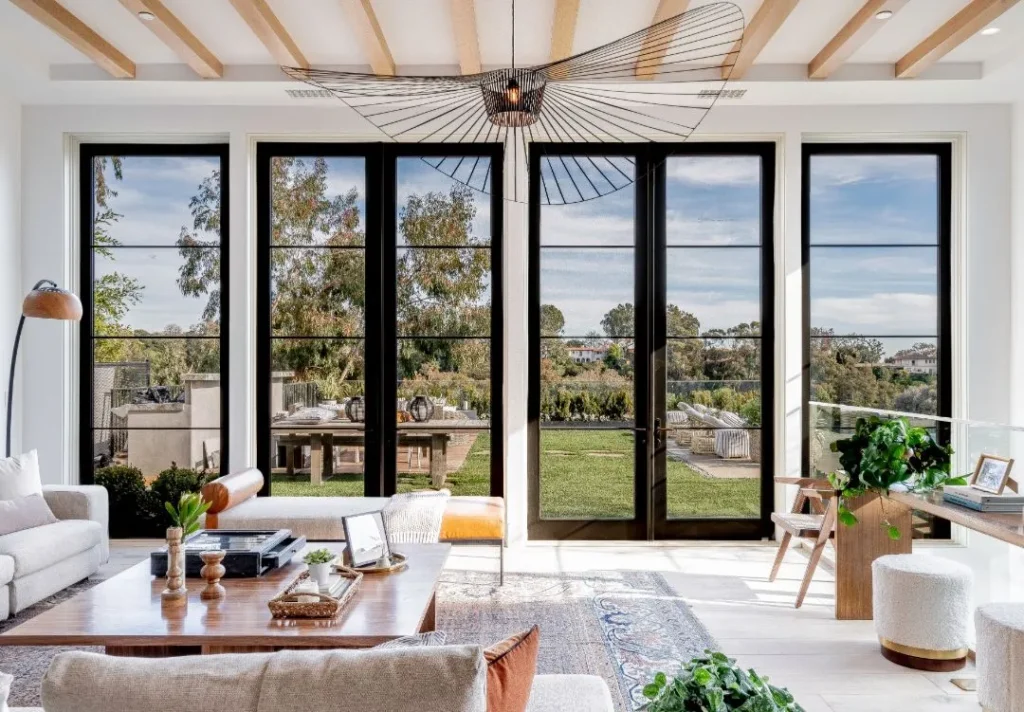
Bronze doors and property type
Bronze windows and doors are most often specified into luxury homes that by their very nature, sit on expansive and often secluded sites – think deluxe estate houses, classic New England beach homes and contemporary clifftop mansions. Because these property types often have long driveways or imposing gated entrances, it’s common for architects to place less emphasis on the entrance doors as a ‘statement’, instead preferring more understated and welcoming styles that don’t interrupt the sense of flow between the indoor and outdoor spaces.
Estate homes, for example, will very often have a more discreet or understated entrance door that is just one of several points where indoors meets out – typically there will be sliding doors leading to wraparound balconies or French doors leading to beautiful terraces, creating a more liminal boundary between the house and its surroundings.
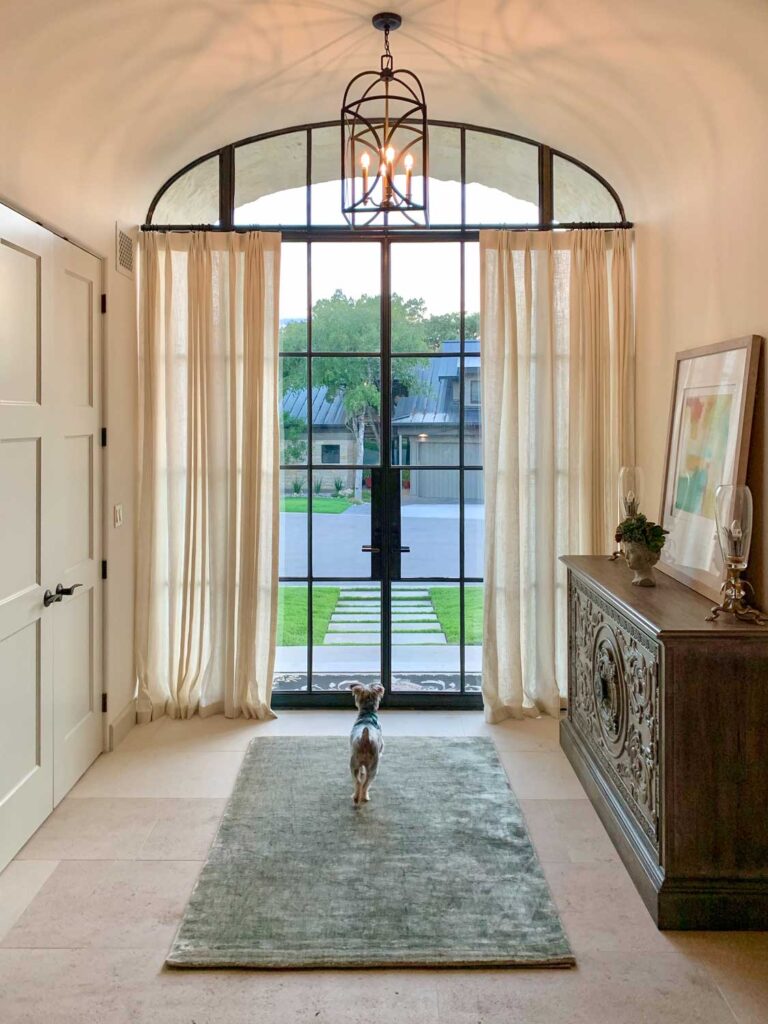
Bronze entrance doors for different architectural styles
The original design for our bronze window and door frame profiles was directly inspired by a Victorian era steel window salvaged from the Peden Steel Factory in downtown San Antonio, so it makes sense that this classic style, featuring ultra-narrow sightlines and genuine, solid bronze muntin bars, is perfectly adapted to period architecture – Victorian, Georgian, Queen Anne and various other historical styles.
However, the same properties that make these profiles so timeless mean they also adapt effortlessly to contemporary architectural styles, their crisp lines forming the perfect accompaniment to very modern or minimalist design aesthetics. Custom design means we can create entrance doors that are completely unique; whether that’s reproducing an original door for a historic property, or manufacturing a completely bespoke door based on an architect’s sketches, we have the expertise to bring your vision to life.
What types of bronze entrance doors are available?
As a custom bronze manufacturer, the only real limit to the shape, size and design of your bronze entrance doors is your imagination! We manufacture single and double door sets, sliding doors, pivot doors, round-top doors and much more. If you have a specific design vision in mind, our team will be only too happy to discuss the mechanics involved in bringing it to life.
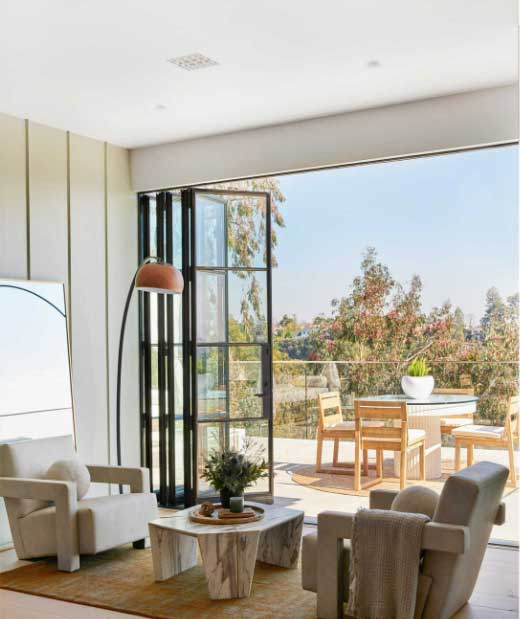
What is the thermal performance of bronze entrance doors?
The doorways into and out of a building are the most common places that heat escapes from a building, and while you can’t avoid having to open the doors, it’s vital that they are as air and moisture tight as possible when closed.
As with our bronze window systems, our bronze entrance doors are manufactured with thermally-broken frames, created using the polyamide strip method which provides superior dimensional stability and reduces the risk of cold shrinkage. This ensures that heat is not exchanged from indoors to outside (and vice versa) via the door frame, making the building more energy efficient and eliminating the formation of condensates, which can lead to damp and mold inside the house.
Our doors are wet glazed using highly efficient double glazing, further enhancing their structural and insulating properties for unrivalled thermal performance.
How durable are bronze entrance doors?
Strength and durability are two of the main reasons architects specify bronze fenestration systems. Bronze is an extremely strong alloy that is also highly ductile. This means it can be extruded into very slender and intricate forms without losing structural integrity. When extremely narrow sightlines are a priority for entrance doors, bronze is the clear cut choice.
Bronze is also extremely durable, even in the face of extreme environments or weather conditions. Naturally corrosion resistant, it won’t rust or rot even when exposed to salty ocean air, making it a reliable choice for coastal homes where even galvanized steel can rust out in a few short decades.
Left to its own devices, bronze develops a rich, natural patina that protects the metal from the elements, enabling it to endure for hundreds of years even in exposed locations (this is why so many statues and sculptures are cast in bronze).
At our factory in San Antonio, we mimic this natural weathering process by treating our raw bronze extrusions with a chemical solution that speeds up the patina process while allowing us to control the final color of the bronze for consistency and repeatability. This patina finish is permanent, so unlike steel or aluminum doors, bronze entrance doors never need to be repainted, making them a low maintenance choice with a lifespan of 150+ years.
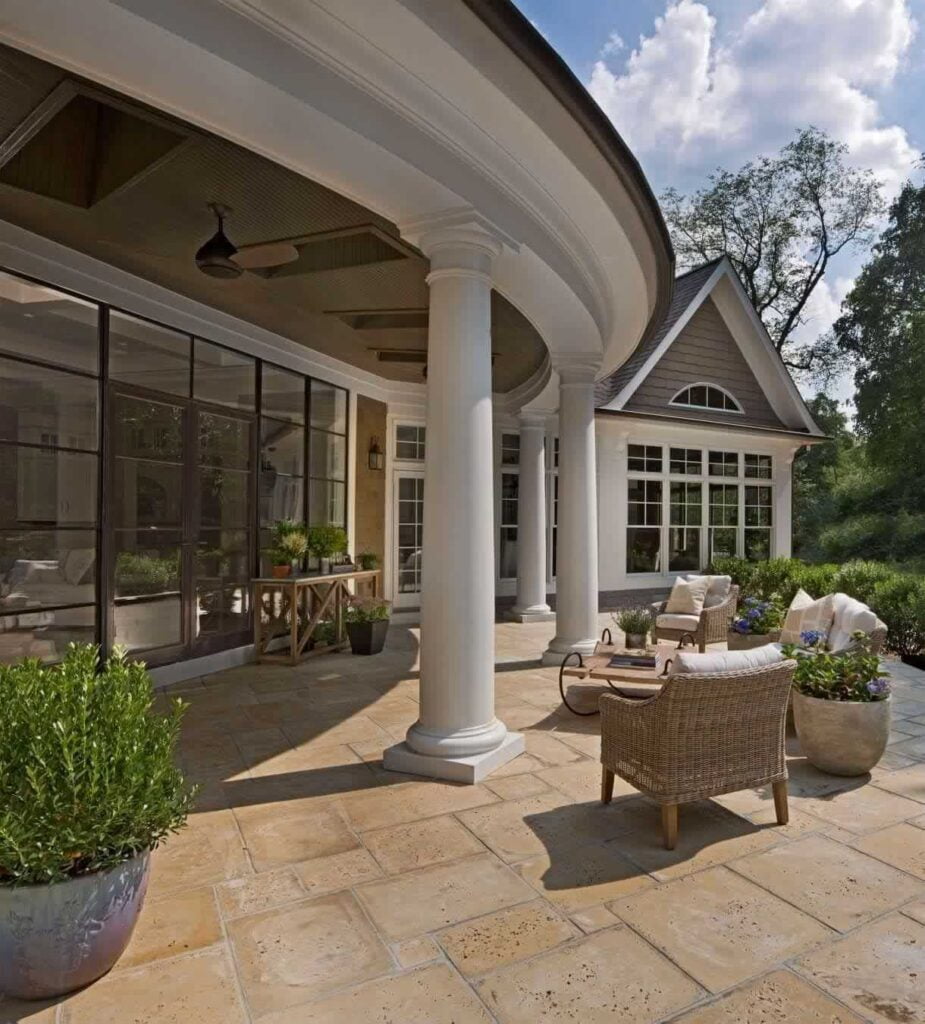
How secure are bronze entrance doors?
Security is a significant concern when specifying entrance doors for obvious reasons.
The good news is that with Renaissance Genuine Solid Bronze entrance doors, you don’t have to make a choice between style and security – our doors are fitted with multipoint locks for maximum security, while our wet glazing method makes it almost impossible to tamper with or remove the glass without specialist tools.
Is privacy a concern with bronze entrance doors?
When architects specify glazed entrance doors it’s usually because privacy isn’t a major concern – typically because the property in question sits on a private plot that isn’t overlooked by neighbors or from the street. But on occasions, it’s desirable to specify a glazed entrance door in order to maximize light inside a property, even if it means sacrificing some privacy.
Depending on the design layout, a plain glazed entrance door may only offer glimpses inside, enhancing curb appeal without compromising on the intimacy of the interior – but if a more private specification is required, our bronze entrance doors can be fitted with frosted or privacy glass in order to achieve that elusive balance between light and privacy.
Want to know more?
If you’re considering bronze entrance doors for an upcoming project and you’d like to know more about the specifics or performance or our custom design process, we’d love to help. Contact us today for a no obligation consultation.
